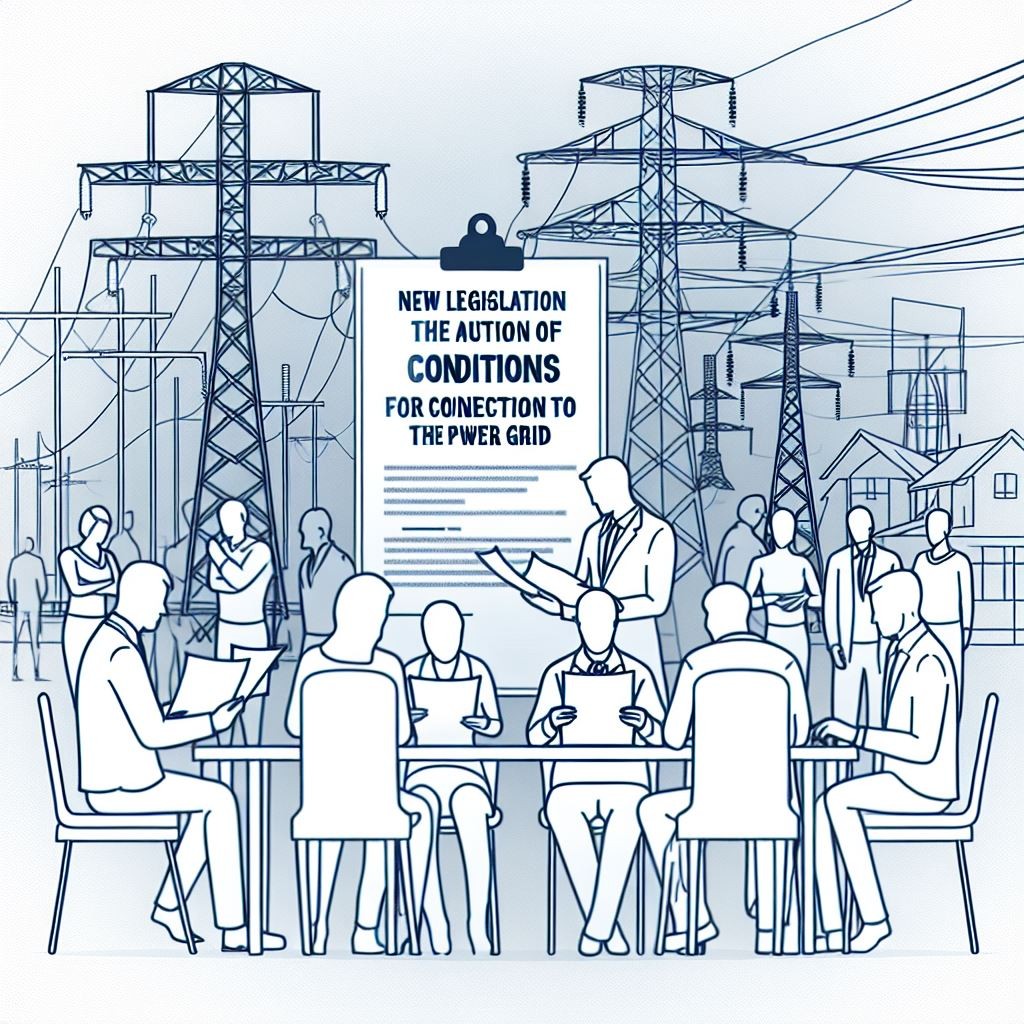09 April 2025
Further Considerations on the Proposed Auction System (Part 2)

The proposed changes
When I wrote my previous commentary on the proposal to introduce an auction system for allocating grid connection conditions, it was before the draft amendment to the Energy Law was published.
It has now turned out that the auction system is proposed exclusively for situations where existing grid connection agreements are terminated and the “released” connection conditions are put up for auction (along with the draft agreement). A party interested in acquiring such conditions will be required to submit a deposit (PLN 30,000 per MW) and, if they win the auction, will become the holder of the connection conditions without any additional obligations. At first glance, this seems like an interesting solution. However, the more we analyse the proposed legislative text, the more doubts arise—eventually leading to the fundamental question: What is the actual purpose of this regulation?
The “zombie” projects
For many years, discussions have been ongoing around so-called “zombie” projects—projects that hold connection conditions but have little or no chance of being implemented. The draft law assumes that all existing connection agreements will, within 12 months, be amended to include new provisions, specifically the introduction of development milestones. The most significant of these requires the submission of permits enabling construction within 24 months, under the penalty of automatic agreement termination.
These “zombie” projects will be subjected to the same procedure—essentially being given another chance to survive for up to three more years, as the current 48-month limit for completing installations will be lifted. This limit currently poses a threat, to varying degrees, to the validity of existing connection agreements. First, the agreements will be amended within 12 months to reflect the new rules, with the first milestone to be reviewed after 24 months. This means that the first connection capacities released in this way will not become available until around the end of 2028.
Auctions – who would benefit from participating in such auctions?
As such, the first auctions will be announced no earlier than early 2029, since there must be at least a five-month period between the auction’s announcement and its execution.
This leads us to the key question: What problem is this auction system actually meant to solve? It’s unlikely that it is designed for developers willing to take on projects from scratch based solely on winning an auction. With only 150 days to progress a project to the point where the risk of not meeting the first milestone within 24 months is deemed acceptable, this becomes a highly speculative investment. Not to mention that, in addition to the auction price, the bidder will also need to submit performance guarantees (PLN 30,000 and PLN 60,000 per MW).
In essence, this auction is a mechanism for purchasing an option to extend the lifespan of previously granted connection conditions (based on a 1:1 model, i.e., tied to specific, original connection terms):
- Certainly, projects that fail to meet the first milestone—even if they’re not technically “zombie” projects. Their grid connection agreements will be terminated, and winning such an auction may be the only chance to save the project and recover the investments made.
- Possibly, though in a very limited way (constrained by the distance from the substation for which the conditions were granted, the project’s development stage, and the 1:1 formula), other projects that have not yet secured connection conditions.
From this perspective, the proposed auction system essentially acts as an additional fee for projects that are still viable but are unable to meet the first or second milestone within the statutory 12/36 months.
Secondary market
Therefore, I return to the proposal I made in my previous commentary: instead of this type of auction, a platform should be established (at the level of individual operators or through an association of operators) that would enable the listing and sale of projects with granted connection conditions—in other words, activating the secondary market. If the goal is to address the backlog of “zombie” projects, such a secondary market should operate for a limited time, after which unsold projects would lose their connection conditions. These, instead of going to auction, would increase the general grid connection potential.
The sequence of actions could be as follows:
- A 6-month period for launching such trading platforms—essentially simple systems connecting transaction parties, since the transactions themselves would take place in a B2B format.
- Transactions would involve the sale of entire projects, not just the grid connection conditions (as in the proposed auction system).
- Proceeds from such transactions would go to the current project owner—the one who invested in development and is hoping for at least partial cost recovery (minus a transaction fee to cover the platform’s operational costs).
- The buyer would sign a new connection agreement under the terms outlined in the proposed Energy Law amendment.
Such a model would allow for a market-based valuation of “zombie” projects much earlier. For current project owners, this provides a chance to recover some of their investment, and for buyers, it allows them to take over projects that are already in progress, at varying stages of development. And if we want to keep an option for regular projects that, for reasons beyond the developer’s control (e.g., administrative delays, deliberate appeals against decisions), fail to meet milestone deadlines, then perhaps instead of creating an auction system, we could simply introduce an additional fee for extending milestone deadlines—for example, in the form of an extra performance guarantee. This would be a more transparent and significantly more market-driven solution.
Grzegorz Skarżyński
Partner
Tundra Advisory



